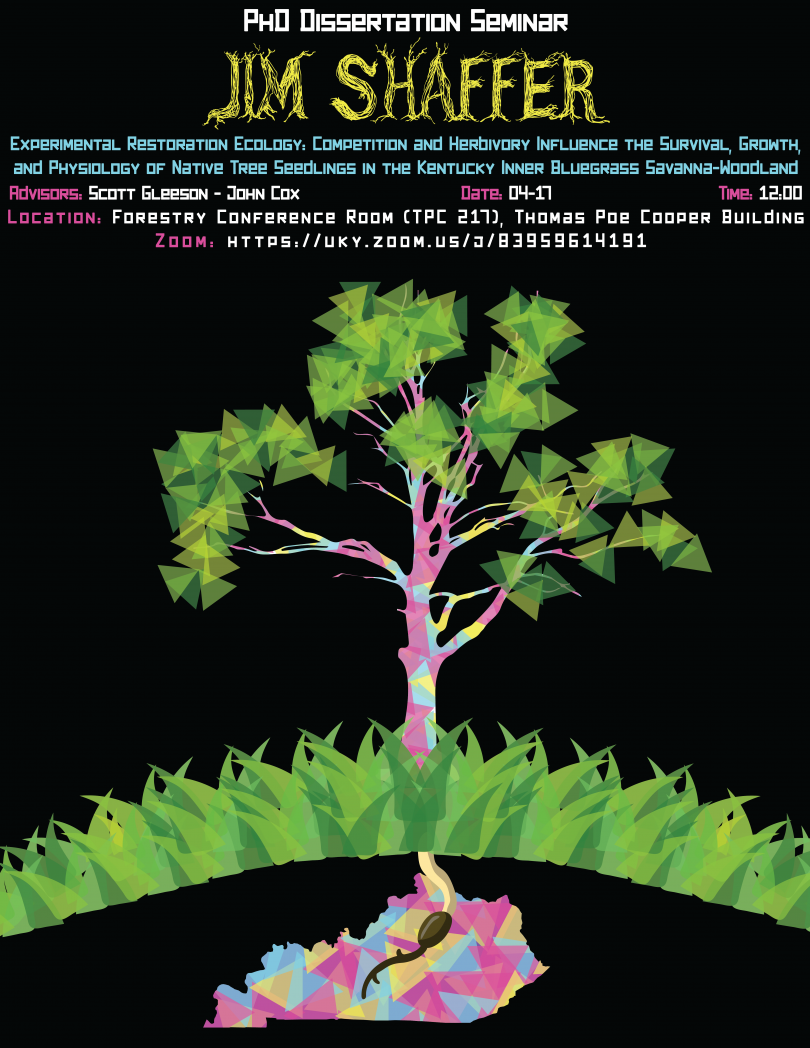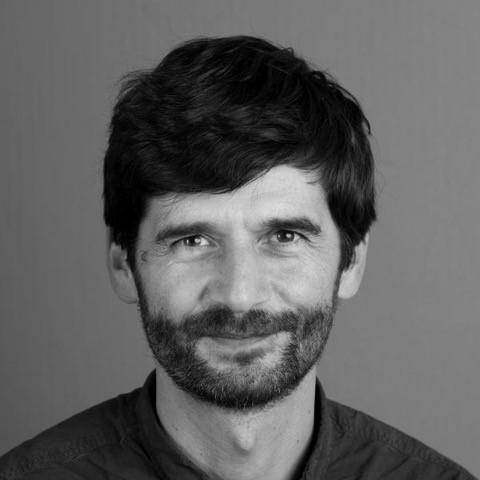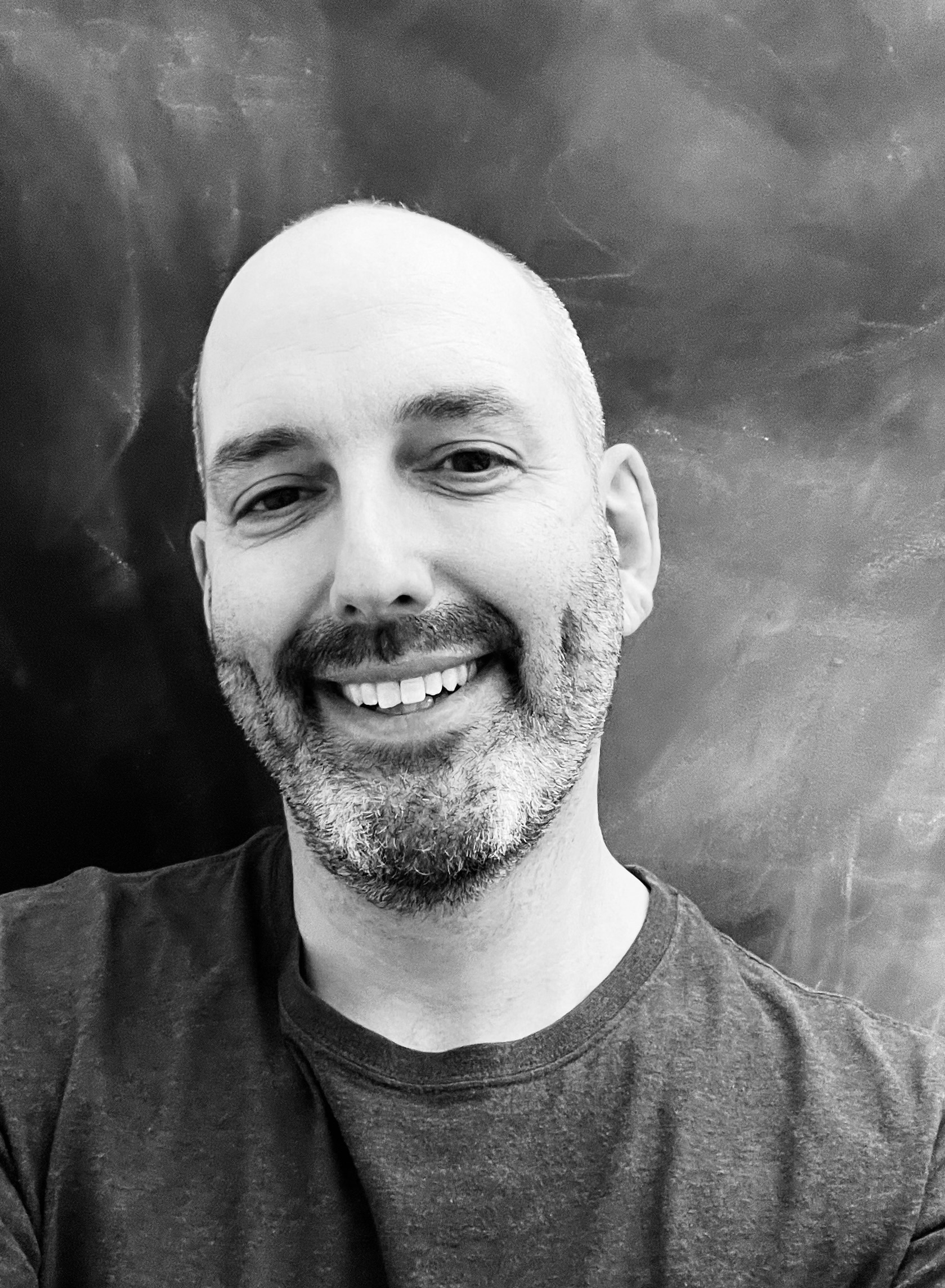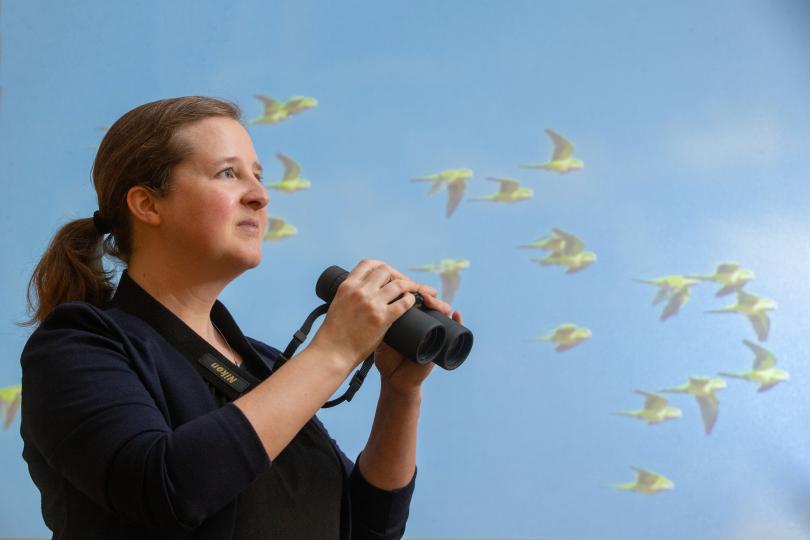"Experimental Restoration Ecology: Competition and Herbivory Influence the Survival, Growth, and Physiology of Native Tree Seedlings in the Kentucky Inner Bluegrass Savanna-Woodland"


 Dr. Francois Spitz | Spitz Lab
Dr. Francois Spitz | Spitz LabBio:
PhD from Université Paris 6 (France)
Group Leader at the European Molecular Biology Laboratory (2006-2015) (Heidelberg, Germany)
Head of Research Unit at the Institut Pasteur (2015-2019) (Paris, France)
Professor, The University of Chicago (2019-.)
Abstract:
The mechanisms that regulate the efficiency and specificity of interactions between distant genes and cis-regulatory elements such as enhancers play a central role in shaping the specific regulatory programs that control cell fate and identity. In particular, the (epi)genetic elements that organize the 3D folding of the genome in specific loops and domains have emerged as key determinants of this process. I will discuss our current views on how 3D genome architecture is organized, how it influences gene regulatory interactions and illustrate how alterations of the mechanisms and elements that organize genomes in 3D could contribute to genomic disorders and genome evolution.
 Dr. Francois Spitz | Spitz Lab
Dr. Francois Spitz | Spitz LabBio:
PhD from Université Paris 6 (France)
Group Leader at the European Molecular Biology Laboratory (2006-2015) (Heidelberg, Germany)
Head of Research Unit at the Institut Pasteur (2015-2019) (Paris, France)
Professor, The University of Chicago (2019-.)
Abstract:
The mechanisms that regulate the efficiency and specificity of interactions between distant genes and cis-regulatory elements such as enhancers play a central role in shaping the specific regulatory programs that control cell fate and identity. In particular, the (epi)genetic elements that organize the 3D folding of the genome in specific loops and domains have emerged as key determinants of this process. I will discuss our current views on how 3D genome architecture is organized, how it influences gene regulatory interactions and illustrate how alterations of the mechanisms and elements that organize genomes in 3D could contribute to genomic disorders and genome evolution.
 Dr. Francois Spitz | Spitz Lab
Dr. Francois Spitz | Spitz LabBio:
PhD from Université Paris 6 (France)
Group Leader at the European Molecular Biology Laboratory (2006-2015) (Heidelberg, Germany)
Head of Research Unit at the Institut Pasteur (2015-2019) (Paris, France)
Professor, The University of Chicago (2019-.)
Abstract:
The mechanisms that regulate the efficiency and specificity of interactions between distant genes and cis-regulatory elements such as enhancers play a central role in shaping the specific regulatory programs that control cell fate and identity. In particular, the (epi)genetic elements that organize the 3D folding of the genome in specific loops and domains have emerged as key determinants of this process. I will discuss our current views on how 3D genome architecture is organized, how it influences gene regulatory interactions and illustrate how alterations of the mechanisms and elements that organize genomes in 3D could contribute to genomic disorders and genome evolution.

Bio:
Dr. Chesler received his degrees from Bard College (B.A., 1995) and Columbia University (Ph.D., 2005). His graduate study, in the laboratory of Dr. Stuart Firestein, was focused on the function and development of olfactory sensory neurons. He did his postdoctoral training in the laboratory of Dr. David Julius at the University of California, San Francisco, where he combined physiological, anatomical, and behavioral approaches to study the pharmacology of somatosensory neurons. He joined the NIH intramural pain program (NCCIH) in 2013 where his laboratory now employs multidisciplinary approaches to study how sensory stimuli (such temperature, touch, and environmental irritants) are detected and encoded by the somatosensory system.
Watch the seminar here!

Bio:
Dr. Chesler received his degrees from Bard College (B.A., 1995) and Columbia University (Ph.D., 2005). His graduate study, in the laboratory of Dr. Stuart Firestein, was focused on the function and development of olfactory sensory neurons. He did his postdoctoral training in the laboratory of Dr. David Julius at the University of California, San Francisco, where he combined physiological, anatomical, and behavioral approaches to study the pharmacology of somatosensory neurons. He joined the NIH intramural pain program (NCCIH) in 2013 where his laboratory now employs multidisciplinary approaches to study how sensory stimuli (such temperature, touch, and environmental irritants) are detected and encoded by the somatosensory system.
Watch the seminar here!

Bio:
Dr. Chesler received his degrees from Bard College (B.A., 1995) and Columbia University (Ph.D., 2005). His graduate study, in the laboratory of Dr. Stuart Firestein, was focused on the function and development of olfactory sensory neurons. He did his postdoctoral training in the laboratory of Dr. David Julius at the University of California, San Francisco, where he combined physiological, anatomical, and behavioral approaches to study the pharmacology of somatosensory neurons. He joined the NIH intramural pain program (NCCIH) in 2013 where his laboratory now employs multidisciplinary approaches to study how sensory stimuli (such temperature, touch, and environmental irritants) are detected and encoded by the somatosensory system.
Watch the seminar here!

Bio:
Dr. Chesler received his degrees from Bard College (B.A., 1995) and Columbia University (Ph.D., 2005). His graduate study, in the laboratory of Dr. Stuart Firestein, was focused on the function and development of olfactory sensory neurons. He did his postdoctoral training in the laboratory of Dr. David Julius at the University of California, San Francisco, where he combined physiological, anatomical, and behavioral approaches to study the pharmacology of somatosensory neurons. He joined the NIH intramural pain program (NCCIH) in 2013 where his laboratory now employs multidisciplinary approaches to study how sensory stimuli (such temperature, touch, and environmental irritants) are detected and encoded by the somatosensory system.
Watch the seminar here!

Bio:
Dr. Chesler received his degrees from Bard College (B.A., 1995) and Columbia University (Ph.D., 2005). His graduate study, in the laboratory of Dr. Stuart Firestein, was focused on the function and development of olfactory sensory neurons. He did his postdoctoral training in the laboratory of Dr. David Julius at the University of California, San Francisco, where he combined physiological, anatomical, and behavioral approaches to study the pharmacology of somatosensory neurons. He joined the NIH intramural pain program (NCCIH) in 2013 where his laboratory now employs multidisciplinary approaches to study how sensory stimuli (such temperature, touch, and environmental irritants) are detected and encoded by the somatosensory system.
Watch the seminar here!

Bio:
Dr. Hobson received her PhD from New Mexico State University and was awarded two independent postdoctoral fellowships, the first at NIMBioS (the National Institute for Mathematical and Biological Synthesis) and the second at the Santa Fe Institute. She started her lab at the University of Cincinnati in Fall 2019 and is currently an Assistant Professor.
Abstract:
In many social species individuals create their social worlds through interaction decisions and are then subject to and constrained by these social constructs, which can affect an individual’s future actions. Understanding how much individuals “know” about their social worlds is critical in understanding these potential feedbacks. However, it is difficult to determine how much information individuals have about the social structures in which they live. In this talk, I summarize several ways my group is addressing these questions by combining empirical experiments with computational approaches to provide insight into cognition through social decisions. I highlight new work on parakeet aggression and dominance hierarchies to illustrate this approach. I show evidence that parakeet rank is unlikely due to individual characteristics and that group-level social dominance patterns can be plastic and can respond to group membership changes. Finally, I show how parallel or related experiments can allow for comparative analyses across species. These approaches, and a taxonomically broad perspective, provide new opportunities to investigate the effect of social information on individual behavior within conflict, and has the potential to provide rigorous evidence for the evolutionary patterns underlying social cognition.
Watch the seminar here!